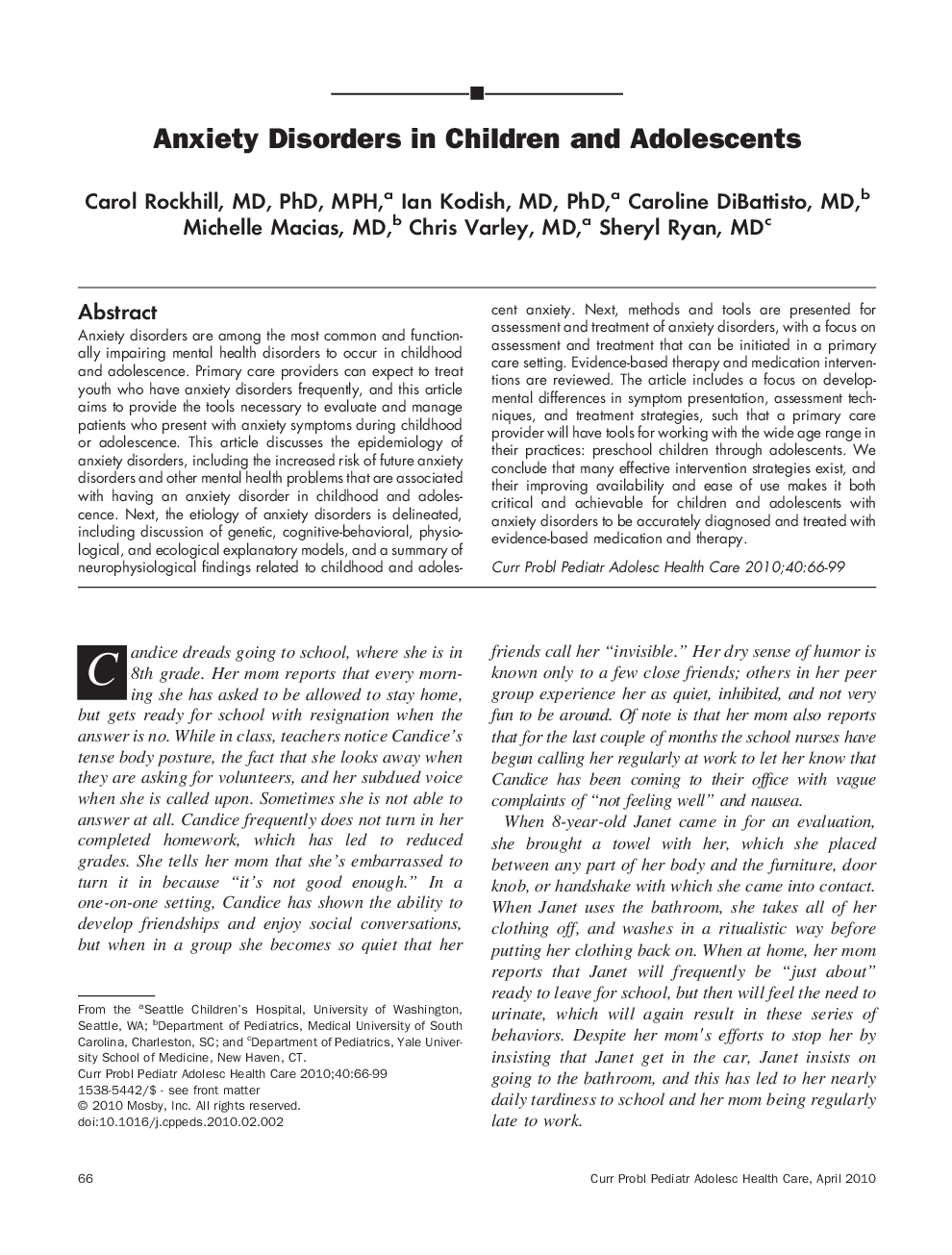| Article ID | Journal | Published Year | Pages | File Type |
|---|---|---|---|---|
| 4153109 | Current Problems in Pediatric and Adolescent Health Care | 2010 | 34 Pages |
Anxiety disorders are among the most common and functionally impairing mental health disorders to occur in childhood and adolescence. Primary care providers can expect to treat youth who have anxiety disorders frequently, and this article aims to provide the tools necessary to evaluate and manage patients who present with anxiety symptoms during childhood or adolescence. This article discusses the epidemiology of anxiety disorders, including the increased risk of future anxiety disorders and other mental health problems that are associated with having an anxiety disorder in childhood and adolescence. Next, the etiology of anxiety disorders is delineated, including discussion of genetic, cognitive-behavioral, physiological, and ecological explanatory models, and a summary of neurophysiological findings related to childhood and adolescent anxiety. Next, methods and tools are presented for assessment and treatment of anxiety disorders, with a focus on assessment and treatment that can be initiated in a primary care setting. Evidence-based therapy and medication interventions are reviewed. The article includes a focus on developmental differences in symptom presentation, assessment techniques, and treatment strategies, such that a primary care provider will have tools for working with the wide age range in their practices: preschool children through adolescents. We conclude that many effective intervention strategies exist, and their improving availability and ease of use makes it both critical and achievable for children and adolescents with anxiety disorders to be accurately diagnosed and treated with evidence-based medication and therapy.
